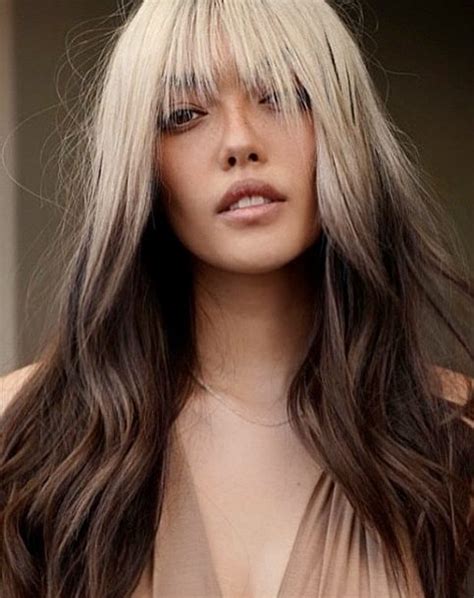Reverse ombre, also known as reverse balayage, is a hair coloring technique that creates a gradual transition from light to dark hair, with the darkest shade at the roots and the lightest shade at the ends. This technique has become increasingly popular in recent years, as it offers a more subtle and natural-looking alternative to traditional ombre.

What is Reverse Ombre Hair?
Reverse ombre is a hair coloring technique that creates a gradual transition from light to dark hair, with the darkest shade at the roots and the lightest shade at the ends. This technique is achieved by applying a lightener to the ends of the hair, while leaving the roots their natural color or darkening them. The result is a subtle and natural-looking gradient that adds depth and dimension to the hair.
How to Get Reverse Ombre Hair
Reverse ombre hair can be achieved at home with a box kit or at a salon with a professional colorist. If you are doing it yourself, it is important to follow the instructions carefully and to use a high-quality hair lightener. If you are going to a salon, be sure to consult with your colorist to determine the best shade of lightener for your hair type and desired look.
Benefits of Reverse Ombre Hair
There are many benefits to getting reverse ombre hair, including:
- Adds depth and dimension to the hair
- Creates a more natural-looking gradient than traditional ombre
- Can be customized to suit any hair type or style
- Is relatively low-maintenance
- Helps to hide gray hair
Drawbacks of Reverse Ombre Hair
There are also some drawbacks to getting reverse ombre hair, including:
- Can be time-consuming to achieve
- Requires regular touch-ups to maintain the desired look
- Can be damaging to the hair if not done correctly
- Can be difficult to achieve on very dark hair
How to Choose the Right Reverse Ombre for You
The right reverse ombre hair color for you will depend on your hair type, skin tone, and personal style. However, there are some general tips that can help you choose the best option for you:
- If you have dark hair, you will need to use a stronger lightener to achieve the desired effect.
- If you have light hair, you can use a more subtle lightener to create a more natural-looking gradient.
- If you have warm skin tones, you should choose a cool-toned reverse ombre to complement your skin.
- If you have cool skin tones, you should choose a warm-toned reverse ombre to complement your skin.
Common Mistakes to Avoid When Getting Reverse Ombre Hair
There are some common mistakes that people make when getting reverse ombre hair. These mistakes can lead to uneven color, brassy tones, and damage to the hair. To avoid these mistakes, be sure to:
- Use a high-quality hair lightener
- Follow the instructions carefully
- Use a toner to correct any brassy tones
- Get regular trims to remove any split ends
How to Style Reverse Ombre Hair
Reverse ombre hair is a versatile style that can be styled in many different ways. Some popular styling options include:
- Straight and sleek
- Curls and waves
- Braids and updos
- Half-up, half-down styles
Conclusion
Reverse ombre hair is a beautiful and stylish hair color that can add depth and dimension to your hair. If you are looking for a more natural-looking alternative to traditional ombre, then reverse ombre is the perfect choice for you.
| Benefit | Description |
|---|---|
| Adds depth and dimension | Creates a more natural-looking gradient than traditional ombre |
| Can be customized | Can be tailored to suit any hair type or style |
| Is relatively low-maintenance | Does not require as much upkeep as other hair coloring techniques |
| Helps to hide gray hair | Can be used to camouflage gray hair |
| Drawback | Description |
|---|---|
| Can be time-consuming | Can take several hours to achieve |
| Requires regular touch-ups | Needs to be touched up every 6-8 weeks to maintain the desired look |
| Can be damaging | Can damage the hair if not done correctly |
| Can be difficult | Can be difficult to achieve on very dark hair |
| Factor | Consideration |
|---|---|
| Hair type | Dark hair will require a stronger lightener than light hair |
| Skin tone | Warm skin tones should choose cool-toned reverse ombre, while cool skin tones should choose warm-toned reverse ombre |
| Personal style | Choose a reverse ombre that complements your personal style |
| Mistake | Description |
|---|---|
| Using a low-quality hair lightener | Can lead to uneven color and brassy tones |
| Not following the instructions carefully | Can lead to damage to the hair |
| Not using a toner | Can lead to brassy tones |
| Not getting regular trims | Can lead to split ends |
